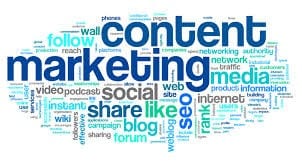Recently Sharon Tanton, the creative director of Valuable Content, wrote an interesting piece called “Stop producing rubbish online marketing that even you’re not interested in.” It’s some worthwhile advice for business owners who understand the value of online marketing and interaction but dread or procrastinate actually doing it or pawn it off on someone who doesn’t understand what good content is.
We all know that much of online content is garbage in the sense of its value to its intended audience. If you think about the PR releases, the blog and Facebook posts, and the tweets you’ve read lately from businesses you’re familiar with, how many of them were truly memorable? How many of them would you share with others, online or off, if you didn’t feel like you had to? If you wouldn’t read them or share them, why would anyone else spend valuable time on them? The answer is that people wouldn’t and don’t, and that’s the definition of garbage content: content that repels people instead of drawing them in.
Another problem with generating garbage content is that, by producing even a little of it, you risk alienating your audience and having them ignore the good content you may be producing or will produce. People get bombarded with ads and marketing non-stop, and once they’ve mentally relegated your business’s marketing and content as junk, it will be very hard to get them back. You’ve lost their trust.
Finally, even junk content takes time to produce or create. It very likely takes less time than creating good content, but you’re still paying someone to do it. Why not pay someone a little more to do a good job rather than a poor one?
So, now that we’ve debunked the value of garbage content, what makes good content good? Tanton says that’s “content with HEART, that’s content which is: Helpful; Entertaining; Authentic; Relevant; and Timely.” This ultimately means that what you’re putting out there for your customers, both current and future, are pieces that are useful and interesting. Readability is also a plus. Essentially you need to ask yourself, the people around you, and – even better – your customers what they want to see. Do they want to be entertained while they digest whatever information you have for them? Does the medium matter? For example, would creating video content less often still be more effective for your goals? Are you talking about things that matter to them right now? Do you know what those things are?
We all know how valuable freebies are for marketing. It’s helpful to look at good content as a small freebie. Give your audience something it likes, something it enjoys in order to create a relationship or start a conversation. If the content you’re creating now consists of advertising, articles no one reads, or tweets directed at no one, is anyone getting something of worth? If you ask yourself that question when you next evaluate your content strategy, you will have taken the first step toward a better marketing for your business.
If we at Corporate Conversions can help you create that content or start that conversation with your audience, we would love to hear from you. Contact us today.


